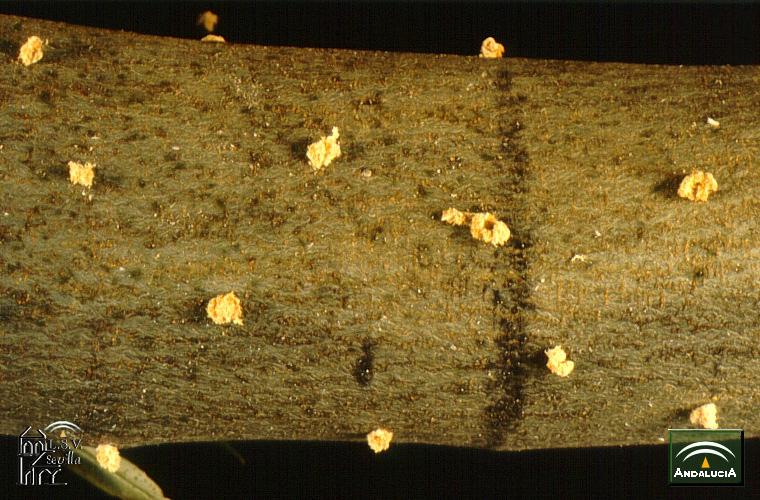
Borers or Bark beetle
Borers or Bark beetle
Pathogen:
Insect
Type:
Risk:
CRITICAL
Barrenillos
Plantas decorativas de jardín y/o interior


WHO CAUSES IT?
The borers, borers or borers comprise a group of xylophagous insects, mainly coleopterans of the families Scolytidae, Bostrichidae and Cerambycidae, which affect numerous plant species. These insects lay their eggs on the bark or in small cracks in plants. Upon hatching, the larvae enter the interior of stems, branches or trunks, where they excavate galleries feeding on the woody or Cambial tissue. This behavior protects them from predators and chemical treatments, making their control difficult. In their development they can go through several larval phases until they reach their adult stage, at which time they leave the interior of the plant through exit holes to complete their reproductive cycle. Depending on the species and climatic conditions, they can complete one to several generations per year. Some borers are active mainly in spring and summer, while others can remain in the larval state during the winter, sheltered within the plant.
SYMPTOMS
The activity of the borers causes a devastating disease in plants, especially in woody and fruit species. By piercing internal tissues, they disrupt sap flow, weaken structures, introduce secondary pathogens, and in many cases lead to the death of branches or entire plants. Its silent and progressive action means that damage is often detected when it is already severe.
- Presence of small circular holes in the bark, stems or trunks
- Sawdust or resinous exudates accumulated near the holes
- Withering or drying of branches without apparent cause
- Premature fall of leaves or fruits
- Appearance of galleries when removing the bark
- Loss of general vigor of the plant
- Regressive death of branches from the tip towards the interior
- Detachment of the bark in highly affected areas

TEMPERATURE AND HUMIDITY
20°C - 35°C
40% - 70%
TRANSMISSION ROUTES
Flight of adults, Transport of infested plants, Contaminated tools, Firewood or infected plant remains
Do you want to remove this pest? Choose how you want to treat it.
TREATMENTS
Chemical treatments
Authorized treatments in organic farming
Biological control
Recommendations
- Carry out regular monitoring in spring and summer to detect initial signs of attack
- Prune and remove affected branches immediately to prevent spread
- Destroy the affected plant material by burning or crushing
- Apply preventive treatments with systemic insecticides during flight periods of adults.
- Place chromatic traps or specific pheromones to capture adults and reduce their population
- Promote the general health of the plant with balanced irrigation and fertilization
- Avoid wounds or poorly performed pruning that encourage the entry of insects
- Use physical barriers such as mesh in nurseries or young plantations
- Do not accumulate firewood or plant debris near crops as they can serve as shelter.
- Apply natural treatments based on oils or repellent extracts such as neem on minor crops.
Sponsored link
Sponsored link
Sponsored link
Sponsored link
Sponsored link
Sponsored link
Effective against all types of fungi
TREATMENTS
Homemade remedies
There are no home treatments
Natural allies
Chemical treatments
There are no treatments for this disease. Treatments are directed at the insect vectors that transmit it. See insect treatments.
RECOMMENDATIONS
- Check the back of the leaves frequently, especially in dry weather.
- Spray water on the leaves to increase humidity and prevent them from settling.
- Keep plants healthy with good watering and adequate light.
- If you see cobwebs or damage, clean the leaves with a damp cloth or pressurized water.
- Use potassium soap or neem oil every few days until they disappear.
REPELLENT PLANTS
Rosemary, Dill, Coriander
EFFECTIVE PRODUCTS TO ELIMINATE THIS PEST
Sponsored link
Sponsored link
Sponsored link
Sponsored link
Sponsored link
Sponsored link
Effective against all types of fungi
*Recommended treatments are still recommendations according to authority databases and in no way replace the guidelines established according to the legislation of each country.
*Products shown are recommendations and not our own products. As Amazon Associates, we earn revenue from purchases of recommended products.






















